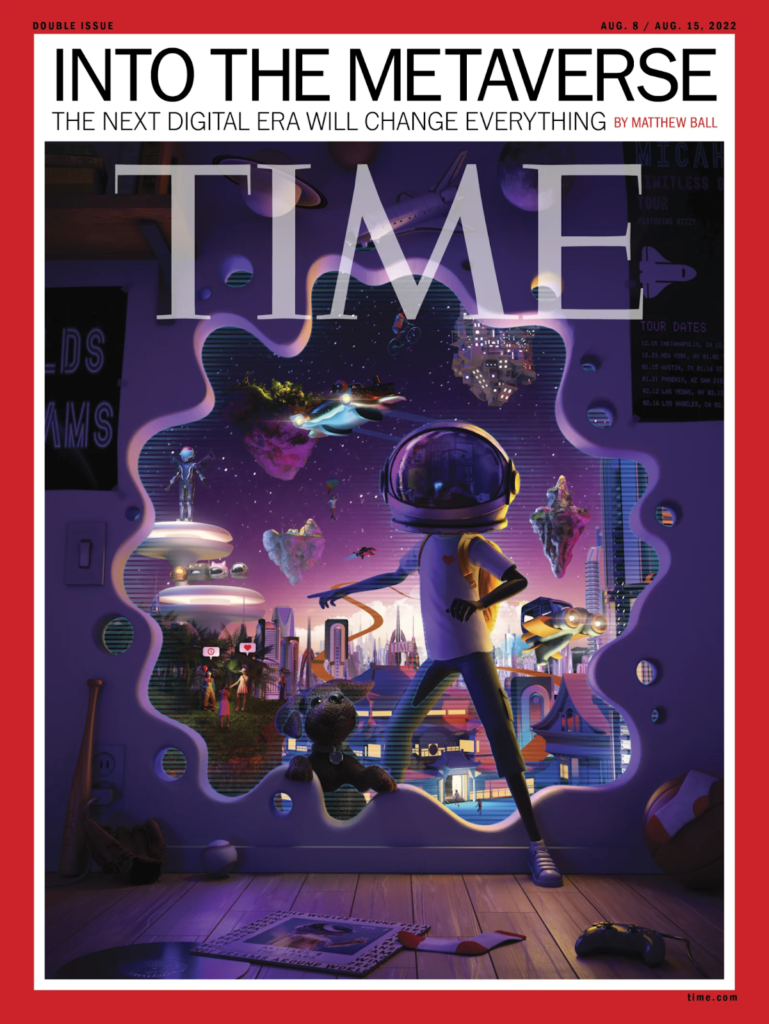Across nearly every sector of the economy, on conference calls… in press releases… and within business plans… we’re seeing a common buzzword:
Metaverse.
Decentraland, Sandbox, TCG World, Meta (formerly Facebook), Roblox, and countless other tech companies are building metaverses: Immersive online experiences incorporating a combination of virtual reality (VR), augmented reality (AR), 3D graphics, and non-fungible tokens (NFTs).
There’s no single definition of a metaverse… But many call it the next phase of the internet. And it will change our lives—especially economically.
Think about social media as it is today: People communicate with each other and sell goods and services in real time (through a combination of messages, pictures, videos, emojis, etc.). The metaverse aims to bring these activities into a virtual world. You can think of it like a video game in that you’ll be able to explore and experience the world with friends and colleagues instead of simply viewing it.
Two weeks ago, TIME Magazine released a cover story on the metaverse. In it, author Matthew Ball dives into how it will shape the future… why big money is pouring into the space right now… and why it will revolutionize all kinds of industries—from gaming to payments to ecommerce and even healthcare.

Here are the key points:
Billions are flowing into the sector:
- Consulting giant McKinsey estimates that $120 billion went into metaverse-related investments during the first five months of this year.… with the money coming from a mix of corporations, private equity investors, and venture capital (VC) funds.
- The biggest tech companies in the world—including Amazon, Apple, Google, Microsoft, Nvidia, and Tencent—are all working on multibillion-dollar metaverse-related product launches.
The metaverse can solve real-world problems:
- Surgeons will be able to perform operations on patients… virtually. Last year, neurosurgeons at Johns Hopkins performed a live patient surgery using special AR headsets.
- Teachers will be able to create elaborate, detailed demonstrations… letting kids explore everything from space to the human circulatory system in a virtual environment.
- Hong Kong International Airport is already using 3D simulations to help improve the efficiency of passenger and aircraft routing.
- City planners are using metaverse-related technology to see how proposed new buildings will affect traffic flows, emergency response times, and sunlight and temperatures in surrounding areas.
What the future holds:
- Some experts view the metaverse as the “fourth era” of computing, after the mainframe era… the internet era… and the mobile/cloud era.
- The metaverse won’t necessarily force you to wear VR/AR goggles or headsets… Google is working on a project that uses holographic video to create 3D experiences.
- The total addressable market for the metaverse is still unclear, but Wall Street firms (including Goldman Sachs, Morgan Stanley, Citigroup, and KPMG) estimate it could be worth anywhere from $2.5 trillion to $13 trillion in annual revenue by 2030.
Editor’s note:
The smartest and wealthiest people in the world are convinced the metaverse will outperform every tech trend before it… but what IS the metaverse?
Frank is making a documentary to find out.





















